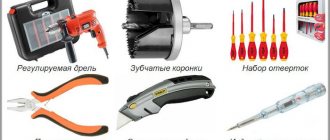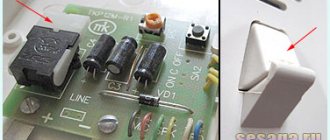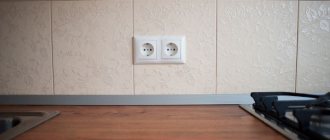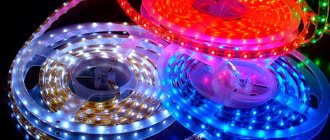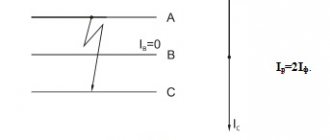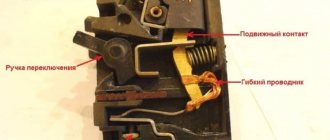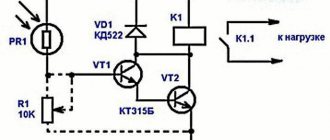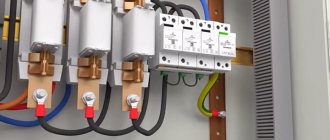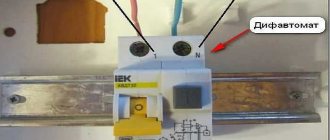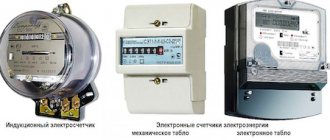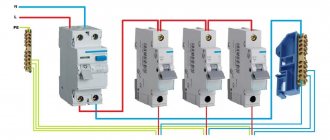Modern apartments cannot be imagined without various household appliances. In this regard, situations often arise when the available connection points are simply not enough. This problem is solved by adding new sockets. However, this is not always convenient, especially after a recent renovation, so the solution is a double socket in one socket, installed instead of a standard product. Double sockets are compact in size, fit into existing wiring, and expand the possibilities for connecting electrical appliances.
Main types of double sockets
Any type of electrical outlets, including USB, are designed to connect various devices to the network. The design includes the main or working part with a contact group, and a cover that protects the internal mechanism from external influences.
Often a problem arises due to the inability to connect an additional device due to the lack of free sockets. Therefore, double sockets installed in one socket box are becoming increasingly popular among apartment owners. Almost all models are equipped with contacts for connecting a ground wire.
Connected double sockets are presented as separate devices installed at close distances from each other. However, as practice shows, this option is not aesthetically pleasing and requires additional drilling of the wall for another socket box.
A monoblock made in the form of a double socket is considered more convenient. It can be installed in an old place with the obligatory replacement of the existing mounting box and does not cause significant damage to the interior decoration. In such monoblocks, the power of the electric current is divided into two parts, and this is their disadvantage, especially noticeable when simultaneously connecting household appliances.
Depending on the modification, monoblocks with double sockets are divided into the following types:
- Closed and open. In the closed version, the holes for the fork are protected by curtains. Such sockets are used in rooms where small children may be present. To activate the curtains, you need to press them simultaneously. Therefore, if a child wants to put some object into the hole, nothing bad will happen. Option 2 is a standard open contact design.
- With or without grounding. In the first case, the sockets are equipped with contacts for connecting the ground wire. Thus, additional protection against current leakage to the device body is provided.
- Sockets with additional protection against moisture and the ability to be installed outdoors. Waterproof devices have a protection class of IP44, and those intended for outdoor use have a protection class of IP55.
Products may be additionally marked. For example, the letter A indicates a double socket made in the USA, the letter B indicates the ground pin.
Connection methods
If you plan to connect an outlet block from one group, then the daisy chain method is used here. This type of wiring can withstand a load that does not exceed 16A. Basically, these are sections of three sockets with additional grounding.
The combined method includes a parallel circuit for connection. Here, two cable lines are laid from the main power source. One of them performs the functions of the loop method. It supplies power to four or six sections of outlets.
The other wire is responsible for maximum power supply to the equipment. It conducts current to the fifth and sixth points. It is most often used for household appliances with high power levels.
The main advantage of this method is the correct distribution of the electricity surge. Each of these points operates independently of neighboring members of the chain.
The main disadvantage of this method is the complex installation and high costs for the cable and its professional installation. These methods can be used for both hidden and overhead types of socket blocks.
The loop method requires laying the cable inside the wall cavity, and the combined method along its surface. Special cable channels increase safety during operation of household appliances. Most channels have additional partitions. Electrical wiring is carefully placed in them.
Materials and tools
Before starting work, you should stock up on all the necessary materials, components and tools.
For installation you will need:
- A hammer drill or electric impact drill for constructing a seat where the socket box will be installed.
- Jumper cable.
- Indicator screwdriver. Necessary to determine the phase and neutral wires.
- A socket box, preferably Legrand, made of durable fireproof plastic or metal.
- Multimeter. Needed for measuring voltage in sections of the electrical circuit where connections are planned.
- Monoblock, made in the form of a double socket.
- Screwdrivers with a Phillips or flat blade, in accordance with the screws used.
- Self-tapping screws or other suitable fasteners used when installing the socket in the installation box.
- A sharp utility knife used to strip conductor insulation.
- Electrical tape to protect connections and exposed parts.
- Corrugated tube. Its use is not necessary, but is desirable to provide additional electrical safety.
Installation instructions
The specific method of installation work depends on the material of the structures. The walls can be made of concrete, brick, wood or plasterboard sheets. In some cases, walls will need to be chipped, in others, you can opt for open electrical wiring.
Preparation
Preparatory work begins with turning off the electricity in the area where electrical installation work will be carried out. When it comes to old houses that do not have automation, to turn off the electricity it is enough to unscrew the plugs.
To complete the work you will need the following materials and devices:
- socket block;
- decorative strip;
- wires for jumpers and organization of electrical wiring;
- socket boxes for connecting into blocks;
- gypsum or alabaster mortar.
When choosing a block, they take into account the quality of the device and the possibility of dedicated connection of PE conductors.
To install the socket block you need the following tools:
- perforator with a drill bit (70 millimeters);
- building level;
- set of tools for electrical installation;
- tape measure, ruler, marker;
- solution container;
- putty knife.
The drill bit is selected taking into account the material to be worked with. For different types of materials, nozzles with different characteristics and prices are produced.
Wall marking
The correctness of the marking determines the comfort of all further work. Before you begin, it is recommended to check for any communications inside the wall. When it comes to drywall, it is extremely important not to damage the profile holding this material.
A ruler, a building level and a marker are tools that are used to mark the surface. It is necessary to consider how many points there will be in the group. Intersecting lines mark the centers of the holes to be made.
Small indentations are made in the center of the future holes. You should pay attention to the accuracy of drilling: the crown should not move to the side during the drilling process.
Advice! When organizing a block, it is not easy to achieve a horizontal position of the holes. It is recommended to use a crown with a slightly larger diameter - 80 millimeters.
It is advisable to prepare a drawing in advance. This will help you better navigate when performing work, in particular, it will help you avoid choosing the wrong places to create holes.
Grooving and creating seats
Drilling seats along crossed lines should be started at low speeds. It is necessary to ensure the correct position of the drill.
In order for the work to be done accurately, the hole is first marked with a drill with a small diameter, then the main crown is used, with which the recess is made in full.
Excess wall material inevitably remains in the holes. They need to be removed, for which a perforated chisel is well suited. Holes and channels are cleaned of material fragments and dust using a paint brush or napkins. Then connecting channels are made between the holes for the protrusions of the socket boxes.
For hidden wiring, grooves are made. If a separate line is needed for one of the points of the socket block, a special channel is created for it.
Note! The PE conductor will be better protected if the cable is placed in a corrugated sleeve.
If necessary, grooves can be made using the old method, using a hammer and chisel. However, this option is too labor-intensive and will take not only effort, but also time. It is especially difficult to lay channels in this way in brickwork. Brick should only be cut using a mechanized method.
Features of installing socket blocks in drywall
Drywall is much easier to work with. Seats in this material are made using a special attachment for plasterboard sheets. Cutting round grooves in drywall is not very difficult.
You just need to not be too zealous - do not put pressure on the instrument, so as not to disturb the fragile foundation. Mounting boxes for drywall are equipped with special claws located on the back side of the material and pulling the glass into the niche.
The distance between the wall and the plasterboard sheet should be sufficient for the socket box to fit into the recess. If the depth is too shallow, the wall needs to be deepened.
Features of fixing socket boxes
To secure the socket boxes, it is recommended to use special glasses connected to each other with plastic clips. Round and square glasses allow you to create a rigid connection of all system components.
In brickwork, socket boxes are fixed using alabaster or gypsum mortar. The ratio of water to the mixture is 1 to 4.
Note! Creamy solutions set quickly - within a few minutes.
The powder is diluted in small portions and immediately placed in a niche. The same solution is used to treat adjacent side edges and the bottom of glasses. When this work is completed, the block is directed into the hole.
The position of the recessed glasses is checked with a building level. It is important to avoid protrusions beyond the plane of the wall. If the socket boxes are installed correctly, the edges are coated with a solution to level the surface as much as possible. The remaining composition is coated with the wire going to the outlet.
The glasses have special clamping tabs that are used to pull the glass into the hole.
Socket boxes recessed into the wall should not extend beyond the plane. If the niche is not deep enough, it needs to be deepened. However, if the surface is to be tiled or plastered, the socket box should protrude slightly above the surface - usually a protrusion of 5 - 7 millimeters is left.
Wiring and connection
Before starting the connection, it is necessary to remove the insulation from the cable cores. This operation is performed with a sharp knife. The length of the wire should not be too long, usually it is no more than 12 cm. The wires themselves are stripped of insulation by about 1 cm. If the wires are too short, they lengthen.
Until the installation of the double socket has begun, the marking of the cables by accessory is determined. The phase conductor is painted brown or red, less often its color is black or white. The neutral wire is insulated with blue or white-blue insulation. The grounding conductor is always painted in the traditional yellow-green color.
However, sometimes the color gamut is off, so it is recommended to take measurements. To do this, use an indicator screwdriver, which touches the exposed wires one by one. On the phase wire the light signal lights up, but on the zero wire there will be no such signal.
Before installation of a double socket begins, the room must be de-energized using a circuit breaker. If it is not possible to turn off only one room, the entire apartment is completely de-energized. At the point where the wire exits where the double socket will be connected, you need to check again for the presence or absence of voltage.
The wires are twisted together directly inside the socket box. The bare ends are connected by soldering or using a special brass contact. In the second case, subsequent operation of the outlet becomes safer.
The wiring and connection of wires to an outlet equipped with grounding is carried out according to established rules. The right terminals are allocated for the phase wire, and the left terminals for the neutral. The grounding cable is connected to the top and center terminals of the socket. The central terminal has antennae, most often protruding beyond the body. The grounding contact is fastened according to the same scheme that is used for phase and zero.
Basic connection options
After it, the wires diverged each to its consumer. With the advent of blocks - various devices assembled in a single housing - it became possible to save on cables and cut less wires. In addition, there is no need to carefully measure the height of the socket with the switch in order to place them exactly next to each other. The disadvantage of such combined devices is that if one thing fails, everything will need to be replaced together. It cannot be replaced separately.
Single-key option
This is the simplest version of the block design. All you need is the unit itself and a connected 3-wire cable.
In the distribution box itself, it is necessary to make the wiring: phase, zero - to the socket, zero - to the lamp, another wire from the lamp - to the switch. Now you need to make the necessary connections inside the block itself.
As can be seen from the figure, connecting elements in one block is no different from separate ones. A phase and a neutral go to the socket. The same phase goes to the contact of the switch, then to the lamp. Now everything is inserted into the box, screwed on, and the key is put on. If you did it right, everything will work.
If the outlet is grounded, then the cable will not have 3, but 4 wires. The fourth is yellow-green. It goes to the ground contact. You can't connect it anywhere else!
Two-key block
There are situations when you need to turn on the light in the bathroom or toilet, and then you need to connect the washing machine somewhere. An outlet can only be installed in the bathroom itself if it has the necessary waterproofing. If not, then it is best to mount everything in the hallway.
To save space and wires, we will again use the “all in one case” block, but only now with two keys. Connecting it is also not difficult.
The first thing to do is to choose a suitable design. Remember that the washing machine uses a heating element - a tubular electric heater. When heating water like a household appliance, it can have a power of up to 2200 watts. The socket must have a rated current of 16 A (the power of the heating element itself, plus the machine motor, plus reserve). Grounding is required here.
Now let's move on to the connection itself. With this option, a cable with 5 cores will be lowered to the socket box from the distribution box. The phase end is red, or brown, or black. Zero – blue, light blue. The earth is yellow-blue. It is important not to confuse the markings so as not to get hurt later.
Let's look at the diagram: the grounding (green in the figure) is connected to a special grounding contact of the socket. It is clearly visible: there are “antennae” on it, which get in the way when the outer cover is put on.
The phase end (red) goes to one of the terminals. From there, jumper to the switch. From its output contacts, two wires go (yellow and beige in the figure) to the junction box, and from there to the corresponding lamps. If you need to change the order in which the keys are turned on, swap the yellow and beige ends on the terminals.
Block with three keys
This can be convenient when, in addition to the bathroom and bathroom, there is a kitchen nearby, and the lighting is turned on from one wall. This is especially common for small apartments. But you can turn on decorative lighting, depending on your imagination. So, we have a socket and a three-key switch in one housing. A cable with 5 or 6 cores comes from the distribution box (with or without grounding). For simplicity, let's consider an example without grounding. The circuit differs from the two-key design only in the presence of one more contact, and as a result, a connection.
The same picture is visible as in the two-key circuit. The phase wire goes to the socket, and a jumper comes from it. Zero - only to the socket. And three wires go out - for three lamps, or for three groups of lamps.
The more cores a cable and connections have, the easier it is to make a mistake. Therefore, you need to be careful during installation. If something doesn’t work out, it’s better to rest a little and then carefully check everything again.
